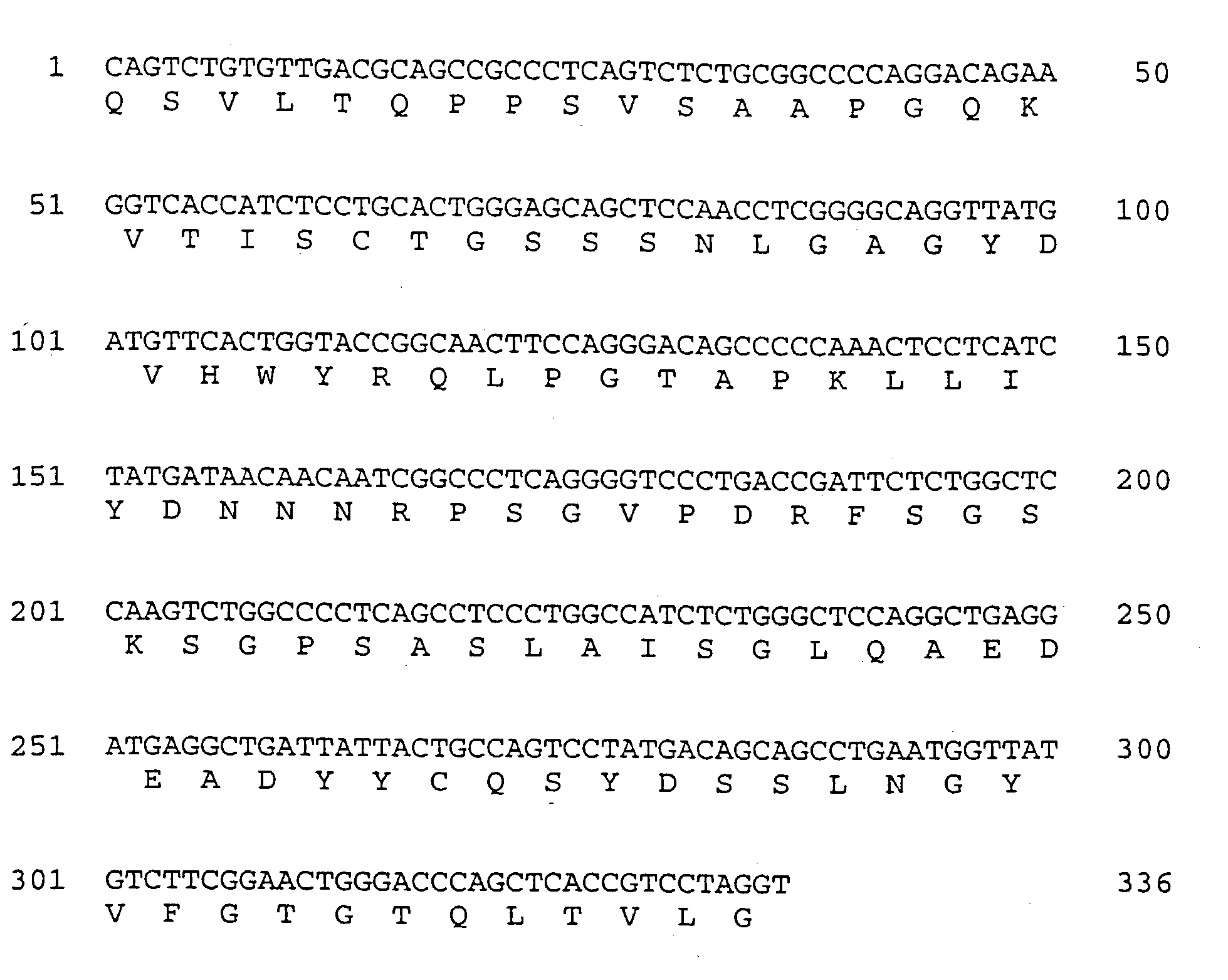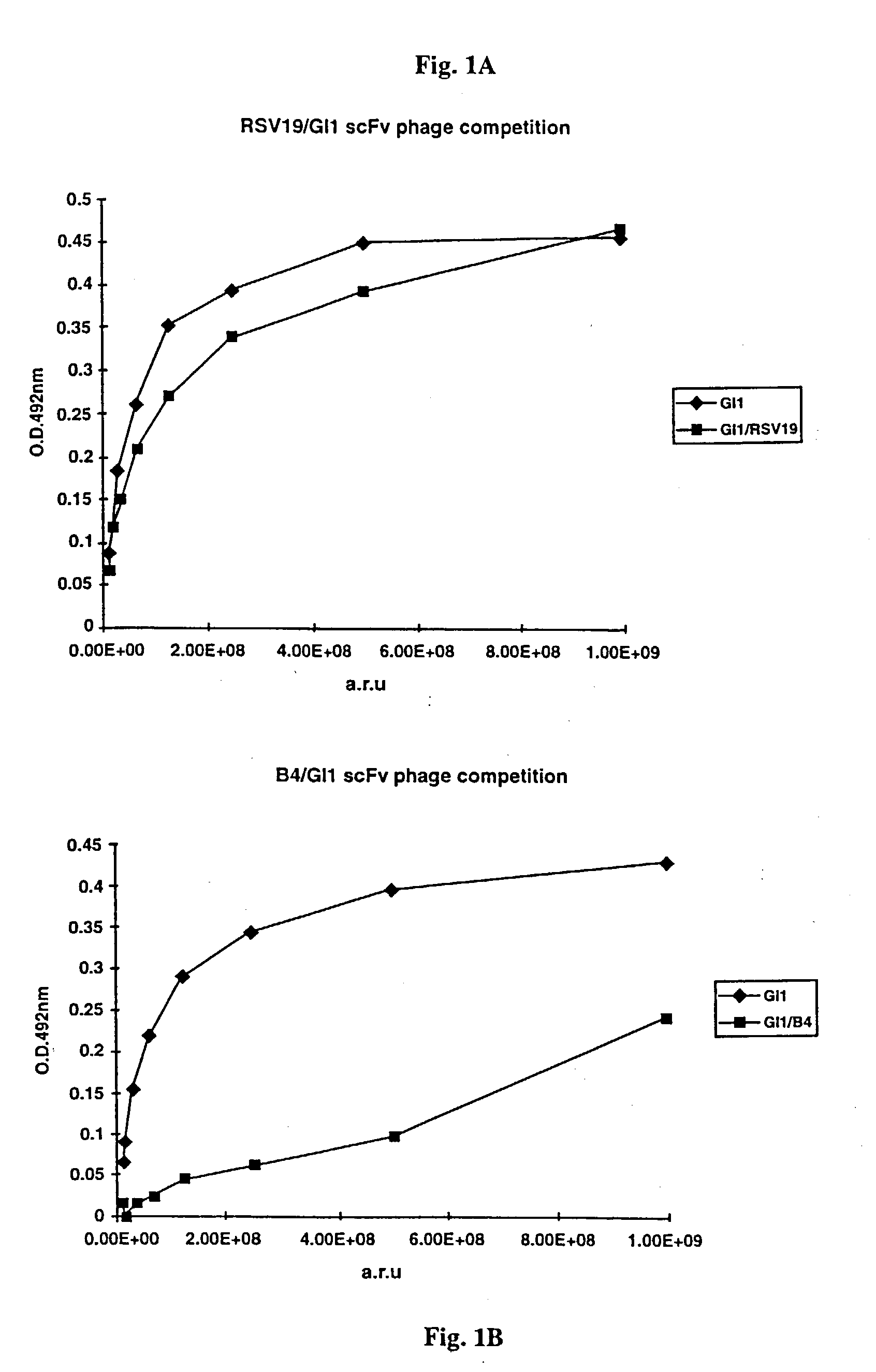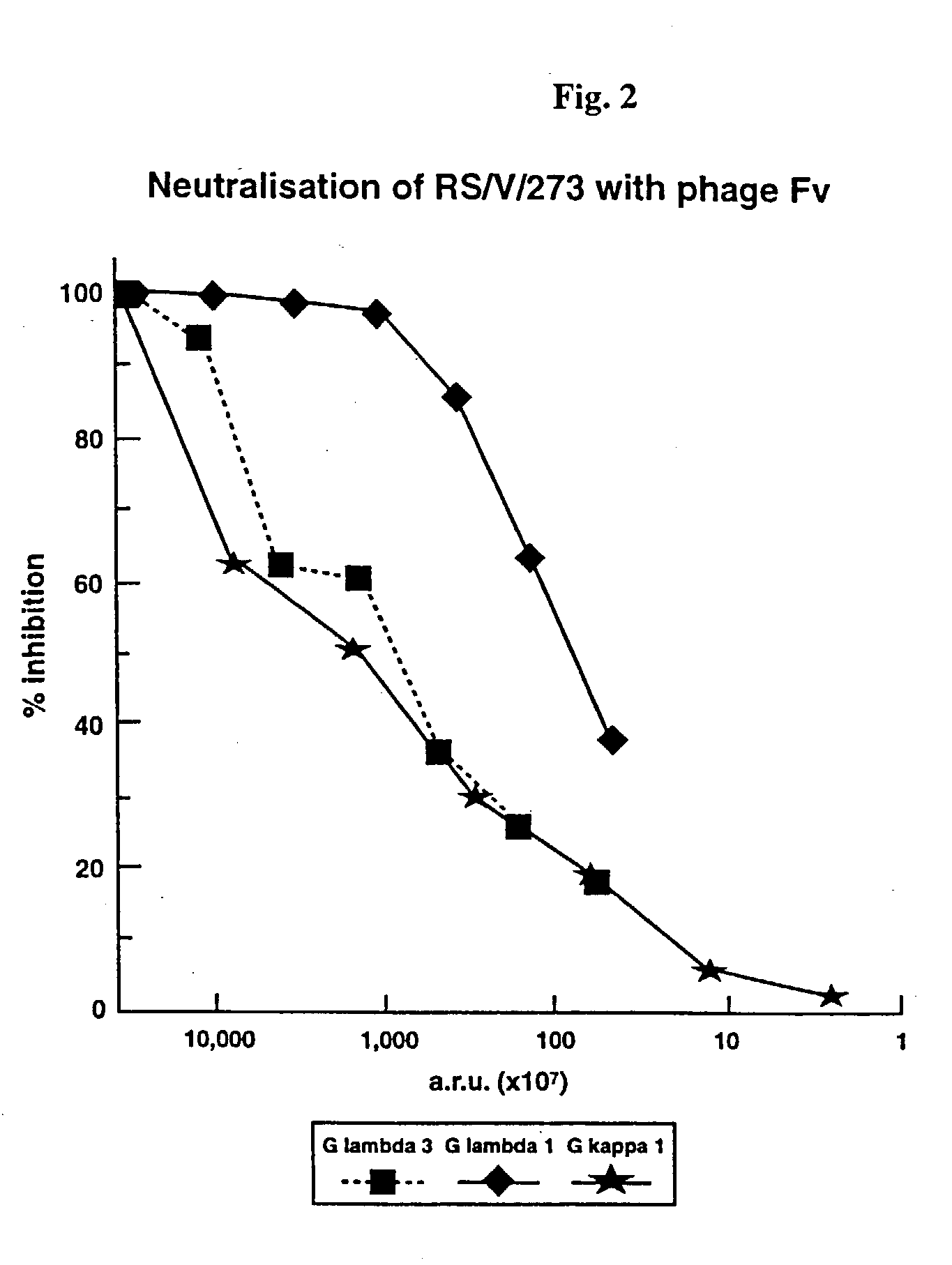Human monoclonal antibody
a monoclonal antibody and human antibody technology, applied in the field of human monoclonal antibodies, can solve the problems of high mortality, high mortality, and high virus contagiousness, and achieve the effects of reducing the amount of globulin, reducing the reliance on direct blood products, and increasing the concentration of specific antibodies
- Summary
- Abstract
- Description
- Claims
- Application Information
AI Technical Summary
Benefits of technology
Problems solved by technology
Method used
Image
Examples
example 1
Isolation of Gλ-1 scFv-1
[0118] Single chain (sc) Fv libraries were prepared from an individual purposely exposed to RSV and selected against recombinant RSV F-protein following described procedures [R. H. Jackson et al, in Protein Engineering, A Practical Approach, A. R. Rees et al eds, Oxford University Press, chapter 12, pp. 277-301, 1992; H. R. Hoogenboom et al., Nucl. Acid Res., 19: 4133-4137 (1991); J. D. Marks et al., J. Mol. Biol., 222: 581-597 (1991)]. Briefly, lymphocytes were isolated from a blood sample taken 15 days post exposure. RNA isolated from the lymphocytes was used for preparation of scFv encoding repertoires for phage display. Sets of V-region primers were paired with constant region primers for heavy chain domain 1 IgG and IgM and light chain C-κ and C-λ and then linked in a scFv VH-VL orientation with a 15 amino acid spacer (glycine4-serine)3 [SEQ ID NO: 21] by overlap PCR [see J. D. Marks et al., cited above, for description of the primers].
[0119] The resul...
example 2
Conversion of Gλ-1 scFV To mAb Version A
[0126] The DNA and encoded protein sequences of the VH and VL regions of Gλ-1 are shown in FIGS. 3 [SEQ ID NOS: 1 and 2] and 4 [SEQ ID NOS: 3 and 4], respectively. For expression in mammalian cells, the heavy chain variable region and the light chain variable region from the Gλ-1 plasmid were cloned into derivatives of plasmid pCDN [Nambi, A. et al., Mol. Cell. Biochem., 131:75-86 (1994)] in which the expression of the antibody chain is driven by the cytomegalovirus promoter (CMV) promoter. Plasmid pCD-HC68B is used for expressing full length heavy chains and plasmid pCN-HuLC, for expressing full length light chains.
[0127] In the initial constructs, changes in the sequence at the amino terminus were introduced by the PCR primers used for cloning the light chain and heavy chain variable regions from plasmid Gλ-1. In these constructs, the peptide signal sequence for both the heavy and light chains is derived from the Campath light chain [M. J....
example 3
Cloning of the Corrected Gλ-1 Heavy and Light Chains
[0131] In cloning the variable region of the Gλ-1 heavy chain from the single chain Fv (scFv) format into the full length format, the fifth amino acid at the amino terminus was changed from Val to Leu, for cloning purposes. To correct this change, PCR primers were designed for the amino terminus of the Gλ-1 heavy chain cloned into pCD, which reverted the fifth amino acid back to Val. The correction was introduced via the PCR overlap technique using the correction primers and primers annealing to sequences within the CMV promoter and the CH−2 constant region as the outside 5′ and 3′ primers, respectfully. The final PCR product was digested with restriction enzymes, EcoRI and Bsp120I, and cloned into the Gλ-1Apcd vector at the same sites to create Gλ-1Bpcd.
[0132] The final construct was sequenced to verify that the amino terminus of the heavy chain had been corrected from EVQLLE [SEQ ID NO: 17] to EVQLVE [SEQ ID NO: 18] (see FIG. 6...
PUM
| Property | Measurement | Unit |
|---|---|---|
| size | aaaaa | aaaaa |
| molecular weight | aaaaa | aaaaa |
| body weight | aaaaa | aaaaa |
Abstract
Description
Claims
Application Information
 Login to View More
Login to View More - R&D
- Intellectual Property
- Life Sciences
- Materials
- Tech Scout
- Unparalleled Data Quality
- Higher Quality Content
- 60% Fewer Hallucinations
Browse by: Latest US Patents, China's latest patents, Technical Efficacy Thesaurus, Application Domain, Technology Topic, Popular Technical Reports.
© 2025 PatSnap. All rights reserved.Legal|Privacy policy|Modern Slavery Act Transparency Statement|Sitemap|About US| Contact US: help@patsnap.com



